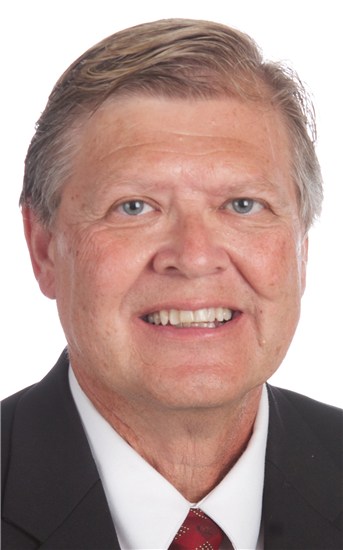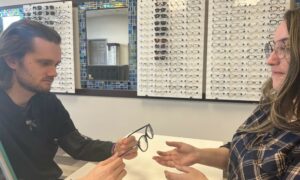By Peter G. Shaw-McMinn, OD
March 18, 2015
As optometrists delve farther into treatment of eye diseases, we seem to be distancing ourselves from our historical calling–to help our patients achieve the best visual acuity possible. Yet new developments are allowing us to provide better visual acuity than ever before. It can also be argued that our patients need better acuity than ever with the advent and use of computers and smartphones. Helping our patients to achieve that better acuity not only fulfills our role; it helps to differentiate our services and our practices in this competitive field.
It may be worth reconsidering what determines visual acuity in the first place. You may recall from optometry school that our potential, anatomically and physiologically, for visual acuity, is 20/8 to 20/6. That’s twotothree times better than 20/20! Yet we cling to 20/20 as the standard for good vision and use outdated charts such as the Snellen chart, which has never been standardized like the ETDRS chart.
Two processes determine visual acuity:focus of the image on the retina and neural processing of the image. If the image is blurred, the visual acuity will be poorer. If the patient is amblyopic, the visual acuity will be poor, despite a clear image, due to poor neural processing. Today we have new instrumentation and products that can focus the image on the retina as never before. Aberrometers can measure both lower- and higher-order aberrations. Spectacle lenses can be prescribed that can reduce the effect of higher-order aberrations (HOA). Contact lenses can correct corneal higher-order aberrations, and some soft lenses correct both corneal and internal aberrations yielding the optimum image on the retina. Refractive surgery can correct HOA.
We can subjectively measure neural processing with contrast acuity charts. In the future I believe we will be able to objectively measure neural processing through visual evoked potentials and electroretinograms as offered through Diopsys.
There are apps and programs that can be used to enhance neural processing skills.RevitalVision is a computer-based program that improves visual acuity by improving contrast sensitivity. Apps for computers, phones and tablets include UltimEyes and GlassesOff.
I can see a future where we measure and correct problems with neural processing, as well as refractive errors. And not just in healthy eyes. Let’s face it, the primary problem with diseased eyes is they can’t see. In the future, I believe we will be prescribing lenses and neuro-processing treatments for glaucoma, macular degeneration and other sight-robbing diseases. Perhaps we’ll prescribe these treatments in conjunction with drugs that encourage the formation of new nerve synapses.
Many of the tools we need are available now. Prescribe RevitalVision,UltimEyes andGlassesOff to your patients as a way of seeing better. And closely monitor developments in the objective measurement of neural processing through companies such as Diopsys. I urge you to measure and reduce the effect of higher-order aberrations in your patients. Investigate correction of HOAs with spectacle lenses such as I. Scription by Zeiss or Enception by VMax. Recall that hard gas permeable lenses or hybrid lenses, like Duette by Synergeyes, correct HOAs present on the cornea. Soft lenses, like Pure Vision by Bausch + Lomb and WaveTouch by Tracey Technologies, can correct for HOA present from cornea and internal lens sources.
Make 20/20 a thing of the past, and 20/10 the standard for best corrected visual acuity in your practice. And don’t forget to help your pathology patients see better by correcting for HOAs and improving their neural processing too!
Do you still correct according to the 20/20 standard? Or do you use the new resources available to help patients achieve 20/10 vision?
Peter G. Shaw-McMinn, OD, is an assistant professor of Clinical Studies at the Southern California College of Optometry. He is the senior partner of Sun City Vision Center, a group practice including five optometrists. Dr. Shaw-McMinn has served as chairman of the AOA Practice Management Committee and the Association of Practice Management Educators. He was the appointed Benedict professor in Practice Management for the University of Houston College of Optometry for 2001-2002. To contact: shawmc1@me.com.

























